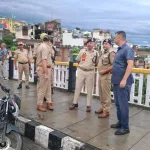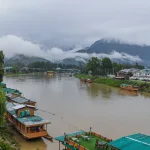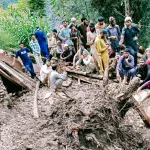Community involvement is key to sustainable development as it is the local communities and societies that are the key stakeholders in tourism. Over the years there has been considerable shift in tourism thinking of the people when they conceive their thought process in terms of selecting the destinations for their visitations. Many factors shape their perception and itinerary regarding the destinations they want to visit. Gone are the days of mass tourism and the flock mentality among the tourists. Global connectivity and advent of the information technology has brought the destination knowledge to the doorsteps of the tourists. It has revolutionized the tourism sector, making the tourists updated with the basic elements of the destination. It helps in many ways in shaping the tourism product and marks the acceptance of the concept of co creation in the tourism business. Where both the service provider and the consumer play the role of value addition.
It has helped the tourists to identify their choice of destinations and places they want to visit, leading to the segmentation of the tourism products in terms of their interests and motivations. These motivations range from religious to cultural, ethnic to folk, adventure to wildlife. New vistas been opened in the ever increasing canvas of the tourism industry by these developments.
The displacement of people for their livelihood and social fault lines present world over in various societies have scattered the people into the lands far away from their homelands. It has developed a sense of sensitivity of the people towards their native culture and tradition. Various studies and data base have established that farther a person is from his native place, greater sense of yearning he/she has for his/her cultural moorings. It infuses a sense of preserving the rituals and traditions. They lose no opportunity to identify themselves with their native place. This pull factor calls them back to their native or ethnic locale. They want to witness the originality of the aesthetic environment from which they evolved as individuals. This mindset has shaped a new trend in the tourism sector prompting the tourists to visit their native place and experience the essence of their identity.World Tourism Organization (WTO) has kept this in mind and given shape to this inherent human tendency making the community development a trend, world over.
The ethnic skills of the host populations are the important for inviting the tourist gaze. It not only attracts the local inhabitants and diaspora towards the destinations but generates the economic avenues. It leads to encouragement of local artisans and folk artists who add value to the destination area. Sensitization at the community level is the biggest strategy in tourism development.Jammu & Kashmir has a great scope for the community involvement and hence community development in the tourism sector to enhance its multiplier effect. Jhiri Mela organized every year in Jammu is an example worth emulating .It has acquired the national recognition and can be a bench mark in devising the policies giving boost to such fairs. Every year various communities in Jammu region organize congregations at one centralized place .Another point worth consideration is that most of these local fairs locally known as Mails have their origin in villages and are organized there. It can be easily concluded that rural tourism and community development are inter related and reinforce each other.
To give shape to this segment and implement the theme of this year’s World Tourism Day, the policy makers that include tourism authorities, Ministry of Tourism & Culture and various other agencies should focus on capacity building and knitting together the local artisans, village entrepreneurs into their policy making ambit to infuse sustainability in the community development schemes in terms of tourism development and entrepreneurship.
Another factor that is worth consideration is the state of heritage . As far as Jammu and Kashmir is concerned the less said the better .Lack of involvement and concern of the stakeholders and their insensitivity has led to the vandalisation of heritage in the entire state. No doubt there has been some activity and ripple effects in terms of heritage activism with a thrust on conservation and preservation but the lack of expertise that is required ,it has only spoiled the apple cart.Now this challenge has multiplied, the reason being the fury of the flood that has posed a serious challenge to the state .
It will take its toll in terms of both life and assets. For the larger part we are all responsible for this disaster as we have been violating the ecological balance and taking it for granted. Various heritage monuments also submerged and collapsed as they were already in dilapidated state. There is an urgent need to devise task force comprising of national and international experts that should include professionals of repute. The immediate step, once the water levels stabilize and come down should be to make an inventory and document the damages to these assets. So that our posterity is not deprived of this rich legacy. If these elements are kept in mind then community development, tourism, culture and heritage will be subjected to one worthwhile comprehensive strategy to make tourism sustainable, responsible and accountable.








